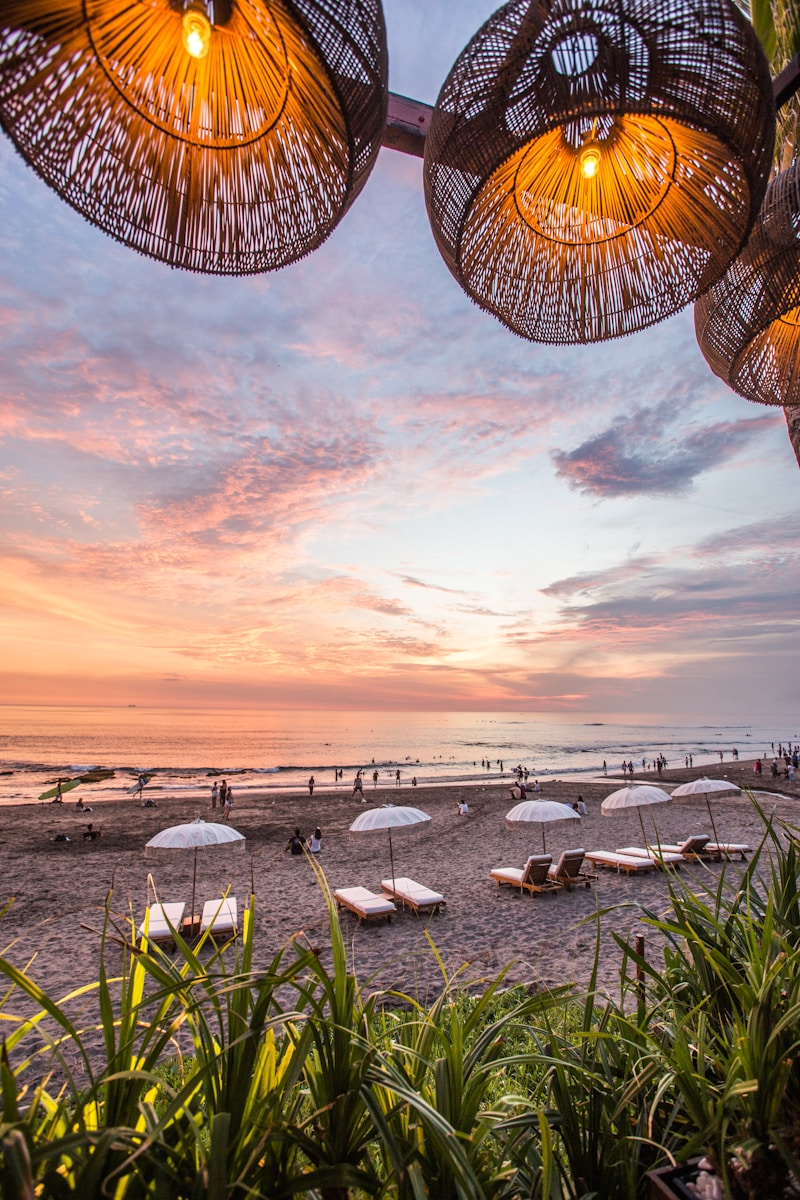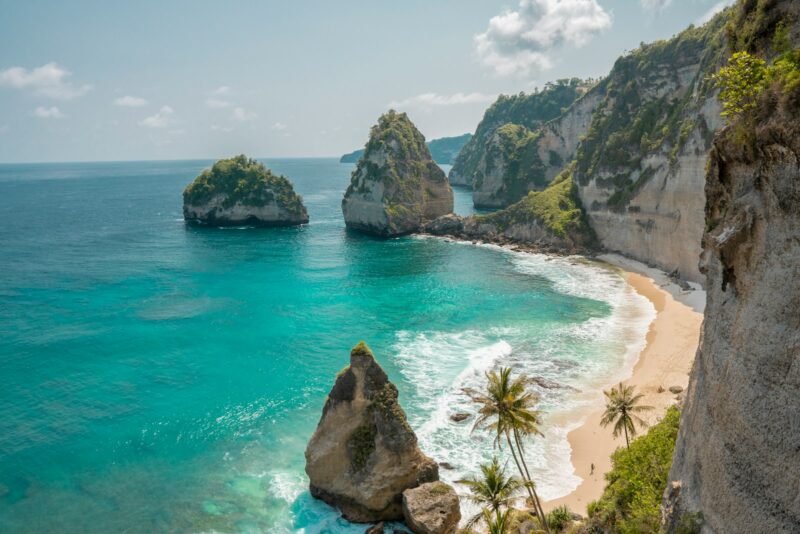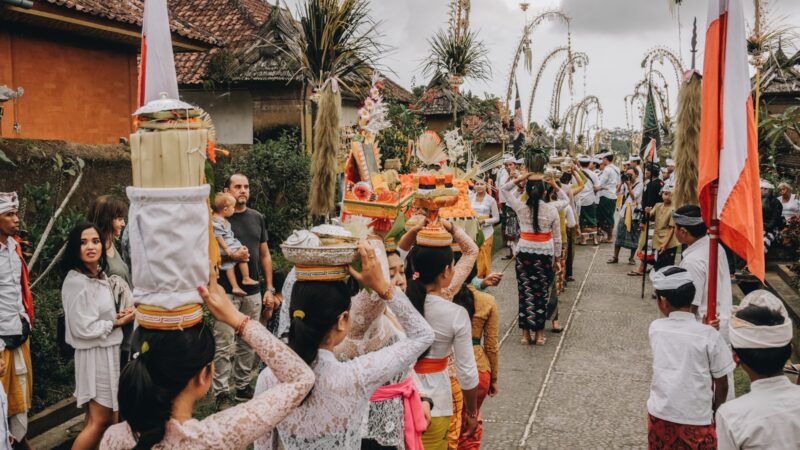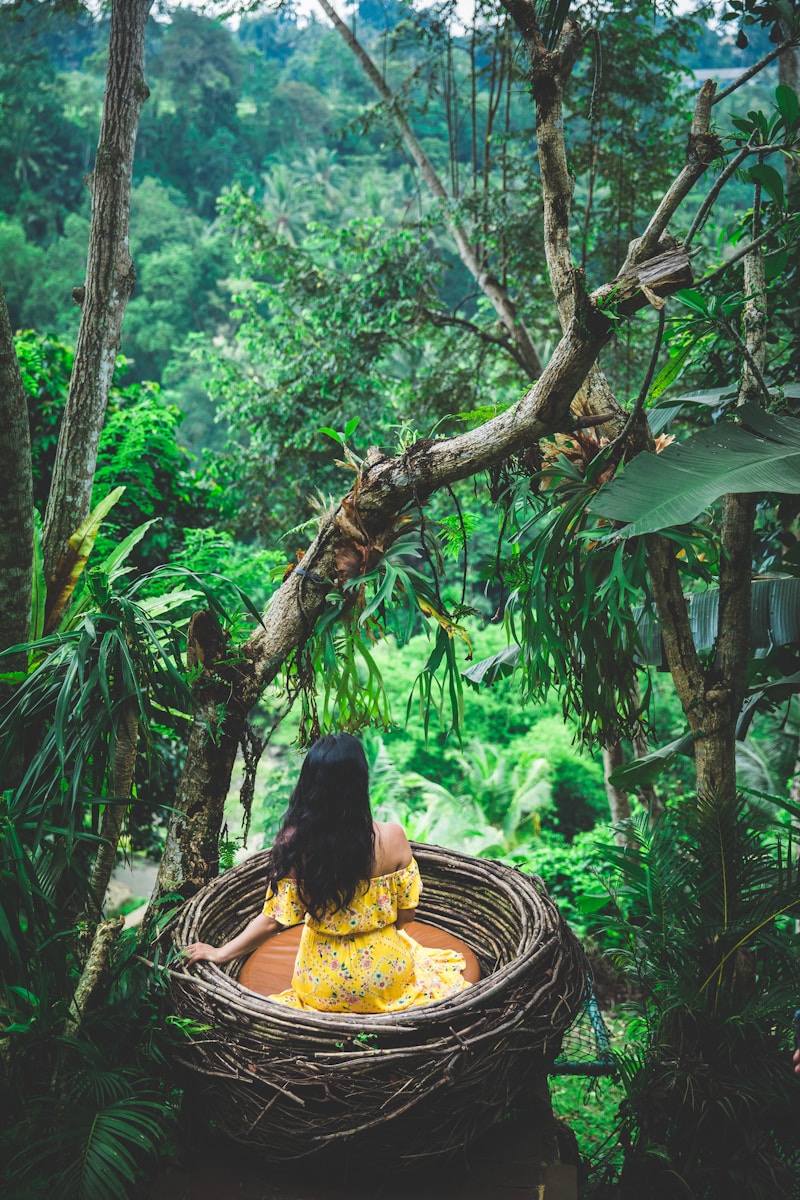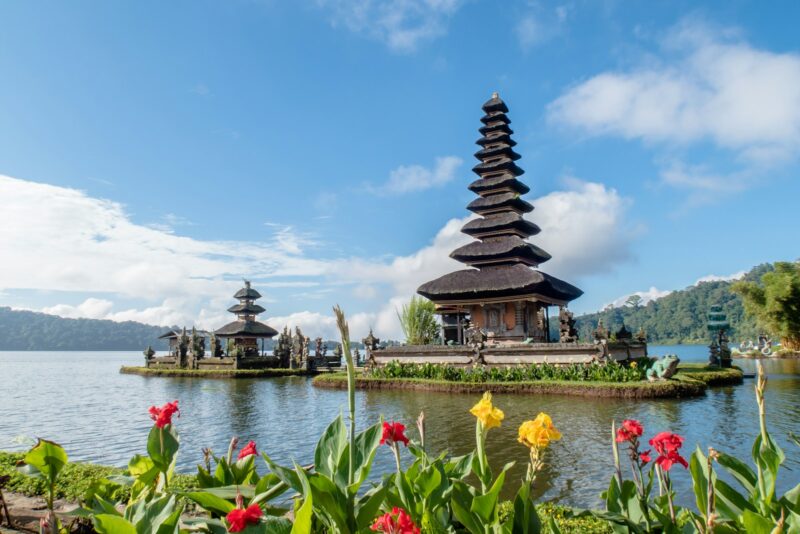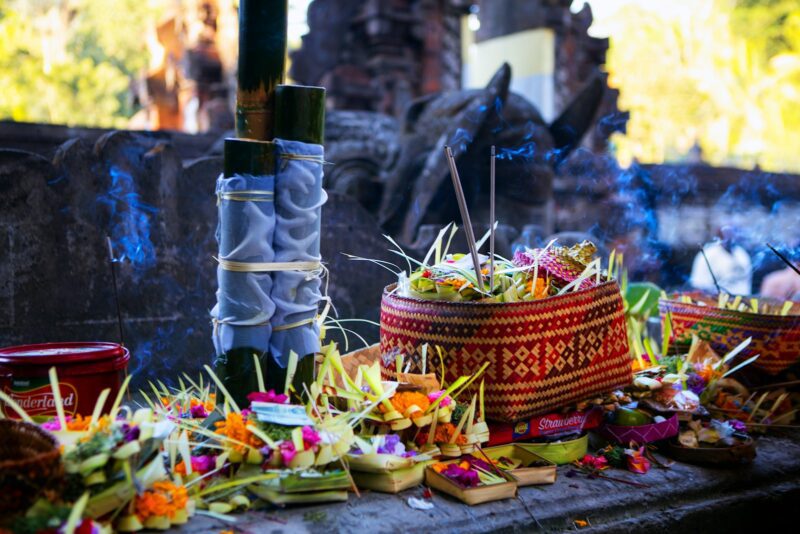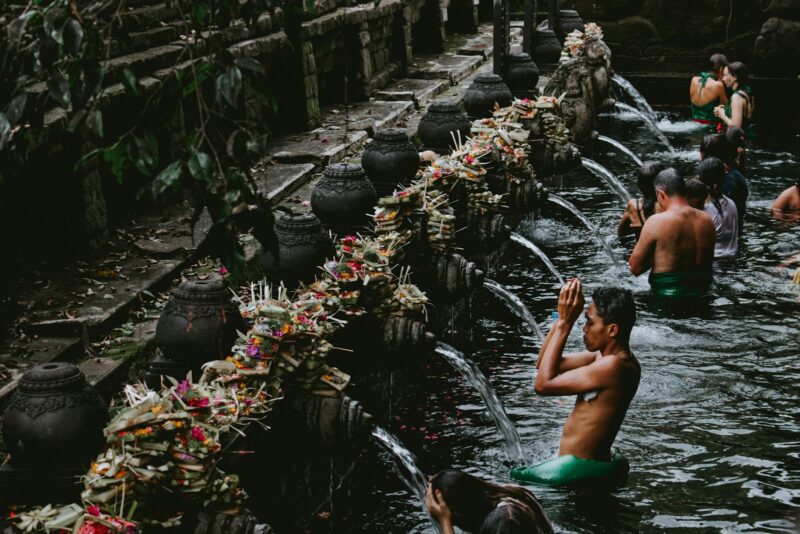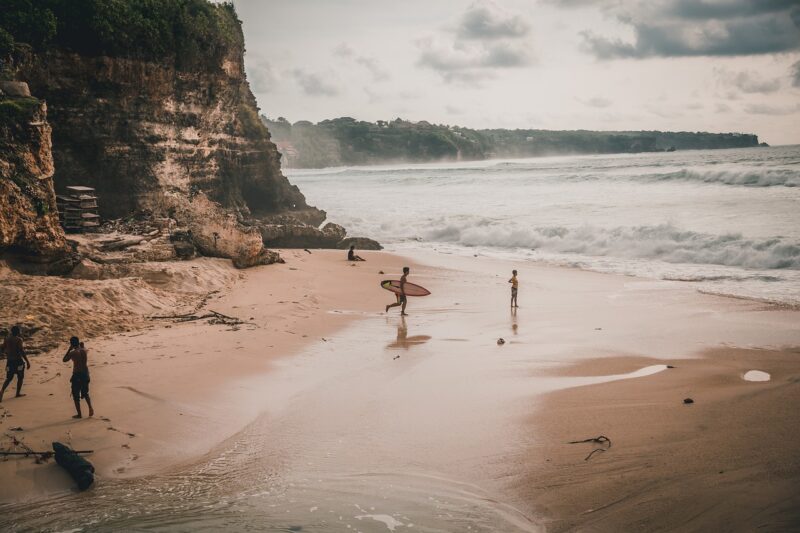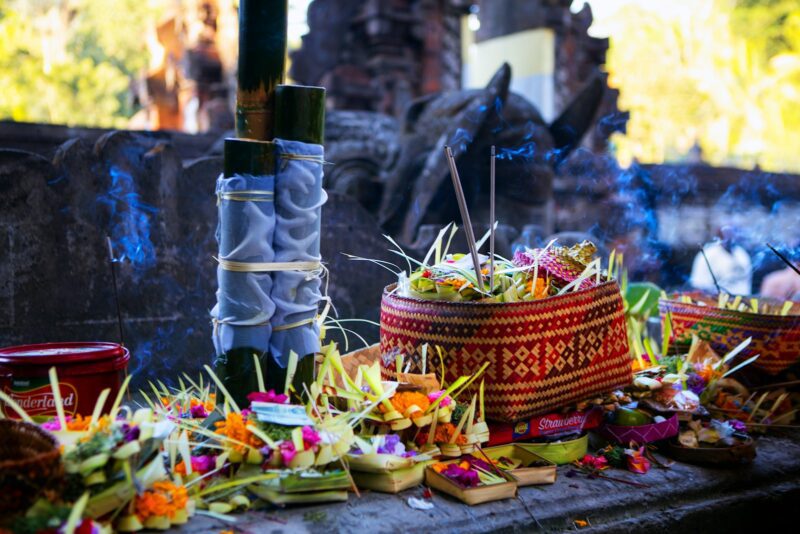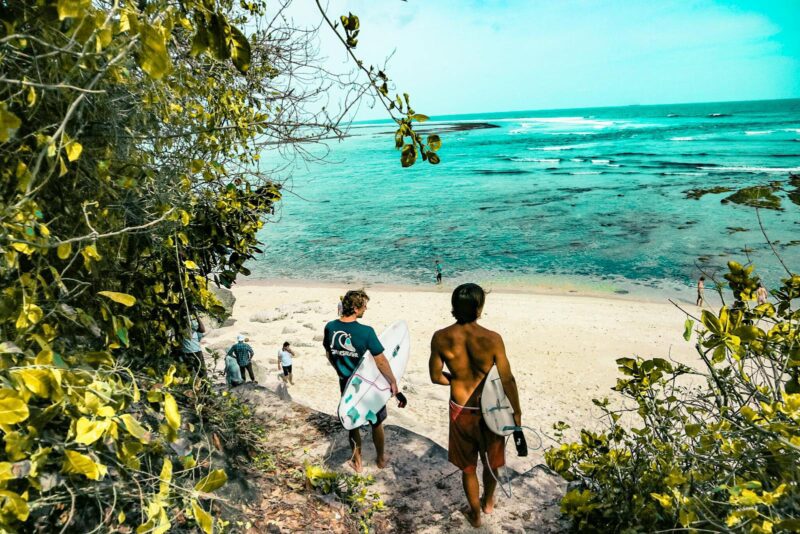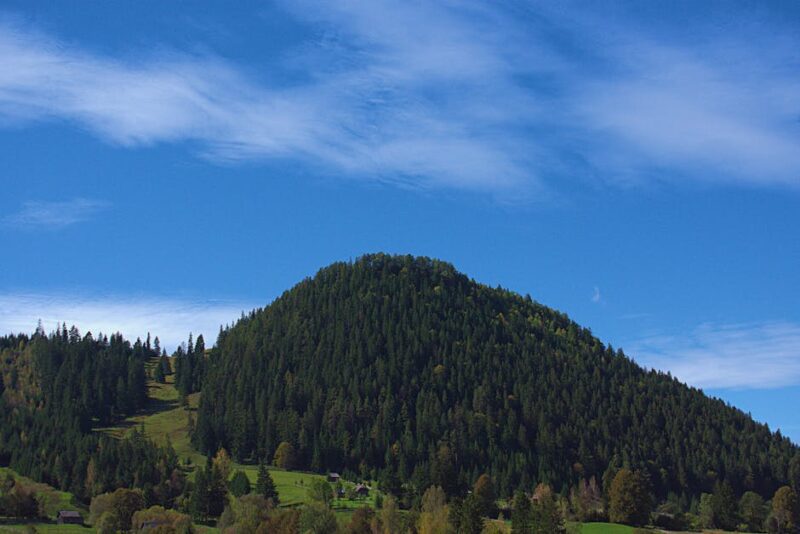Bali, a lush island province of Indonesia, has long captivated travelers with its vibrant culture, picturesque landscapes, and inviting climate. As a seasoned traveler to this “Island of the Gods,” I find that Bali’s allure lies not just in its postcard-perfect beaches but also in its spiritual heritage, manifested in the myriad of temples and cultural ceremonies. The harmonious blend of traditional Balinese customs with modern hospitality makes it an ideal destination for explorers seeking both serenity and adventure.
My journeys around the island have taught me the importance of timing your visit to enjoy Bali’s myriad offerings. While the dry season, typically from April to September, promises sun-soaked days perfect for beach activities and exploration, the wet season has its own charm with fewer crowds and lush, rejuvenated landscapes. Bali’s rich culinary scene is a feast for the senses, combining local ingredients with traditional cooking methods to offer an array of delectable dishes. From fine dining restaurants to street-side warungs, there’s something to satisfy every palate.
Table of Contents
ToggleTravel Guide to Bali: Key Takeaways
- Bali’s culture and natural beauty make it a unique and enriching travel destination.
- Ideal visit timing and local transport knowledge enhance the travel experience.
- The diversity in accommodation, cuisine, and activities caters to various preferences and interests.
Travel Guide to Bali: Best Time to Visit
Planning a trip to Bali hinges on understanding its seasonal weather patterns and considering the influx of tourists during various months. As someone who’s keen on giving you the essentials, let me guide you through the optimal times for your visit, influenced heavily by weather and crowd levels.
Travel Guide to Bali: Weather Patterns
Bali’s climate is tropical, resulting in a distinct dry season from April to October, which I find to be prime for outdoor activities and beach time. The dry season sees less rain and is characterized by sunny days and a comfortable climate, ideal for exploring the island’s rich landscapes. On the other hand, the rainy season, spanning from November to March, is marked by higher humidity and frequent downpours, though rain often comes in short bursts, allowing for breaks of sunshine.
Travel Guide to Bali: Peak and Off-Peak Seasons
If you’re looking to avoid the crowds, April, May, and October often offer a sweet spot with good weather and fewer tourists. Conversely, July and August witness peak tourism due to holidays in the western hemisphere, so expect more significant crowds and higher prices. The times just before and after the rainy season, such as late March and November, can also see fewer visitors, making it an excellent time for me to enjoy Bali’s offerings in relative solitude.
Travel Guide to Bali: Getting There and Around
When planning a trip to Bali, it’s important to consider how you’ll navigate this tropical destination. Whether you’re opting for a taxi to explore the island or renting a scooter for more flexibility, understanding the local traffic patterns is key to a smooth journey.
Travel Guide to Bali: Transportation Options
Taxis: Readily available at the airport and popular tourist areas. They are a convenient but often more expensive option for getting around. For a hassle-free experience, opt for reputable companies like Blue Bird where rates are metered.
Scooter Rentals: A popular and economical method to traverse Bali’s landscape. Renting a scooter provides the freedom to discover lesser-known areas at your own pace. Ensure you are comfortable with the ride and always wear a helmet for safety.
Private Drivers: For exploring multiple destinations or day trips, hiring a private driver can be both time-efficient and cost-effective, given their local knowledge of the quickest routes.
Bikes: For the fitness enthusiast or those preferring a leisurely pace, bicycles can be hired for short distances, especially in quieter regions of Bali.
Travel Guide to Bali: Understanding Local Traffic
Congestion: Bali’s traffic is notoriously congested, particularly in areas like Kuta, Seminyak and Ubud during peak hours (7-9 am and 4-6 pm). Plan your travel outside these times when possible.
Roads: Many roads in Bali are narrow and can be challenging for drivers not used to the local driving style. My advice is to remain vigilant and patient, especially in more rural areas where road conditions can vary.
By being aware of these transportation options and the dynamics of local traffic, you can minimize stress and maximize enjoyment on your Bali adventure.
Travel Guide to Bali: Accommodations
When I travel to Bali, the variety of accommodations amazes me, with options ranging from luxurious resorts to affordable guesthouses. Whether you’re looking for a beachfront villa or a hostel in the heart of a bustling town, Bali caters to all preferences and budgets.
Travel Guide to Bali: Hotels and Resorts
Top-tier Hotels:
For opulence and unparalleled service, I recommend the St. Regis Bali Resort, which epitomizes luxury living in harmony with nature. With its serene atmosphere and thoughtful amenities, it’s a sanctuary that redefines relaxation.
Resorts Offering Holistic Experiences:
Resorts such as the Ayana Villas Bali provide a comprehensive experience enveloped in 222 acres of lush landscape, offering a harmonious balance between natural splendor and the comforts of modern luxury.
Travel Guide to Bali: Villas and Guesthouses
Private Villas:
My stay at a villa always feels like a private retreat, especially with the variety found here. Some grant the solitude of an elevated cliffside, while others sit cozily amongst the rice paddies of Ubud.
Charming Guesthouses:
I love the intimacy of Balinese guesthouses. They offer a more personal touch to my stay—often family-run and a wonderful doorway to local culture and community.
Travel Guide to Bali: Budget Stays
Affordable Options:
Bali doesn’t skimp on accommodation choices even for the budget-conscious traveler. Hostels and budget hotels abound, providing clean and comfortable rooms without a hefty price tag.
Strategies for Savings:
Booking accommodations in less tourist-centric areas such as Denpasar or finding deals in advance can significantly reduce my lodging expenses. It’s a smart way to save money while exploring this enchanting island.
By considering these options, I can prioritize my preferences and find the perfect base to explore Bali’s cultural richness and natural beauty.
Travel Guide to Bali: Sightseeing Highlights
Bali is a treasure trove of cultural and natural wonders. As a seasoned traveler in this majestic island, I’ve found that the real beauty of Bali is in its diverse sightseeing opportunities—from ancient temples to pristine beaches.
Travel Guide to Bali: Temples and Historical Sites
Pura Tanah Lot stands as an iconic pilgrimage temple, poised on a rock formation off the coast of Bali. It’s one of those places to visit in Bali that blends spiritual aura with natural splendor, especially at sunset. Mount Batur is not just another volcano; trekking up this site for sunrise provides a spiritual experience that matches the physical exertion. In the south, Uluwatu Temple is perched on a cliff and not only offers spiritual insight but also boasts a captivating view of the Indian Ocean.
- Pura Ulun Danu Bratan: A picturesque water temple that is critical for the irrigation of the central Bali rice fields.
Travel Guide to Bali: Beaches and Nature
The beaches here are varied and vibrant. Nusa Dua Beach offers golden sands and crystal-clear waters, ideal for swimming and relaxation. For those seeking a more serene beach experience, Nusa Lembongan is a short boat ride away and provides an escape from the bustling mainland.
- Seminyak Beach: Expect fashionable boutiques and upscale dining along with a mesmerizing sunset.
- Kuta Beach: Known for its lively ambiance and surf waves.
Away from the coastline, the rice fields of Bali paint a different picture of the island’s natural beauty. The lush green terraces, especially in Tegallalang and Jatiluwih, are essential sights for anyone wanting to experience the rural vistas of Bali. In North Bali, you’ll find tranquil waterfalls and quiet countryside that are away from the typical tourist trails.
Travel Guide to Bali: Culinary Experiences
As a foodie, I’ve discovered that Bali’s culinary scene is a vibrant tapestry of flavors, offering mouthwatering dishes at local restaurants, enticing street food, and a variety of drinks at the cafes and bars.
Local Restaurants
In Bali, restaurants serve up an authentic taste of Balinese cuisine with dishes like Babi Guling and Bebek Betutu, meticulously spiced and slow-cooked to perfection. For seafood lovers, restaurants near Jimbaran Bay provide fresh catches grilled right on the beach for a unique dining experience. Nasi Campur, a mixed rice dish often accompanied by small portions of a variety of different dishes, is a must-try.
Street Food Ventures
On the streets, a foodie adventure awaits with vendors selling classic Indonesian snacks like Satay and Martabak. Exploring local markets is the ideal way to find a wide variety of Balinese street food. Do not miss Sate Lilit, spiced meat wrapped around lemongrass sticks, or the savory Lawar, a traditional mix of vegetables, coconut, and minced meat.
Cafes and Bars
Cafes in Bali are cozy retreats for coffee aficionados, serving both international brews and local Balinese coffee. Artisanal coffee shops in Ubud let you enjoy a latte with views of lush rice terraces. For nightlife, Seminyak and Kuta are famous for their vibrant bars where one can savor signature cocktails, local beers, and the famous Arak, a spirit made from distilled rice or palm sap.
Travel Guide to Bali: Leisure and Wellness
I’ve found that Bali is a sanctuary for those seeking serenity and self-care. The island’s spa and meditation retreats provide an unparalleled experience of relaxation, while yoga and wellness centers are renowned for enhancing physical and mental well-being.
Spa and Meditation Retreats
Bali’s spa retreats are the epitome of indulgence, often featuring treatments that incorporate local ingredients like Balinese boreh (a traditional herbal scrub). The tranquility of Bali’s environment complements its meditation retreats, which are designed to foster inner peace through guided sessions and calming surroundings. For those seeking a retreat that combines both spa and meditation, Mandapa resort’s intuitive blind healing stands out, offering an exceptional healing journey.
Yoga and Wellness Centers
In Bali, yoga is more than just exercise; it’s a lifestyle. I’ve discovered that the island’s wellness centers offer a variety of yoga styles, from gentle hatha to vigorous vinyasa, ensuring there’s a class to meet every preference and skill level. These centers emphasize holistic health, often including organic cafes and detox programs. The Best 14 Wellness Retreats in Bali highlight the synergy of natural beauty and yoga practice for a restorative and uplifting experience.
Travel Guide to Bali: Adventure and Activities
Bali’s diverse landscapes and seas offer thrilling activities to sate any adventure-seeker’s appetite. From water sports that harness the power of the waves to treks that challenge your limits with every step, the options are endless.
Travel Guide to Bali: Water Sports and Diving
Bali is synonymous with water sports, and for good reason. The island’s clear waters are perfect for surfing, with prime spots like Uluwatu and Kuta beach providing the perfect waves for both beginners and pros. My experiences diving here have been nothing short of magical, with vibrant coral reefs teeming with life. Interested in scuba diving? Places like Menjangan Island offer some of the best visibility and marine biodiversity, making it a dream destination for divers.
- Surfing: Kuta, Uluwatu, Canggu
- Scuba Diving: Menjangan Island, Tulamben (Shipwreck)
Travel Guide to Bali: Hiking and Trekking
When it comes to hiking and trekking, Bali’s highlands provide an idyllic backdrop. Climbing Mount Batur to catch the sunrise has been one of the most rewarding experiences of mine, with panoramic views that justify the early morning start. For the more adventurous souls, trekking through Bali’s lush rainforests to discover hidden waterfalls or embarking on river rafting tours adds that adrenaline spike to your trip. It’s not just about the destination; the journey itself is filled with remarkable sights and sounds.
- Mount Batur: Sunrise Trek
- Rafting: Ayung River, Telaga Waja River
Travel Guide to Bali: Shopping and Souvenirs
Exploring Bali’s shopping scene can be as rewarding as its beaches and cultural experiences. I’ll share the richness found in local markets and artisan villages, where authentic Balinese souvenirs like art, crafts, and textiles tell their own tales of this enchanting island.
Travel Guide to Bali: Local Markets
In Bali, local markets are a bustling tableau of culture and commerce. Ubud Market is a must-visit for handcrafted goods; you can find everything from exquisite silk scarves to hand-painted sarongs. Bargaining is expected, so do not hesitate to negotiate for the best price. Another must-visit is the Kuta Art Market, a compact array of stalls filled with souvenirs ranging from wooden statues to colorful beachwear.
- Ubud Market: Silk Scarves, Sarongs, Handicrafts
- Kuta Art Market: Wooden Statues, Beachwear, Accessories
Travel Guide to Bali: Artisan Villages
Heading out to the artisan villages like Mas, I’ve discovered the unparalleled craftsmanship of Balinese woodworkers. Mas is renowned for its intricately carved wood pieces, a traditional craft handed down through generations. Whether you’re shopping for statues of Hindu deities or more contemporary carvings, the attention to detail and artistry here is unmatched. These villages not merely sell products; they offer a glimpse into the Balinese way of life, where art forms an intimate part of everyday existence.
- Mas: Wood Carvings, Furniture, Statues
- Celuk Village: Silver Jewelry, Goldsmiths
Shopping in Bali for souvenirs isn’t a mere transaction; it’s an interaction with the island’s soul. Through each hand-carved statue, woven basket, and painted batik, I find pieces of Bali’s heart to take home.
Travel Guide to Bali: Nightlife and Entertainment
When I visit Bali, the nightlife scene is always high on my agenda. From beach clubs to bustling nightclubs, the island offers a diverse range of evening entertainment options.
Travel Guide to Bali: Beach Clubs and Nightclubs
I’ve discovered that Bali’s beach clubs have a unique charm, providing an exquisite blend of dining, leisure, and partying by the ocean. Potato Head Beach Club in Seminyak stands out with its regular events and renowned cocktails. It transitions seamlessly from a relaxing day spot to a lively night scene.
At nightclubs across Bali, I find the atmosphere to be electrifying. Mirror Lounge & Club also in Seminyak, features gothic cathedral-inspired interiors and top-notch sound systems, making it an unforgettable experience.
Here’s a quick glance at two nightlife spots I enjoy:
| Venue | Location | Specialty |
|---|---|---|
| Potato Head Beach Club | Seminyak | Events, cocktails, ocean view |
| Mirror Lounge & Club | Seminyak | Unique decor, DJ performances |
For EDM enthusiasts and those looking to dance the night away, the clubs in Kuta are a playground of beats and rhythms. With international DJs often headlining, venues like Sky Garden offer multiple floors of diverse music genres.
The nightlife in Bali caters to a range of tastes. From quiet drinks while admiring the sunset to high-energy clubs where the party continues till dawn, there’s something for every type of night owl on the island. Whether I seek a laid-back evening or an all-out celebration, Bali’s nightlife and entertainment venues never disappoint.
Travel Guide to Bali: Tips for Travelers
Before stepping into the vibrant culture and lush landscapes of Bali, I want to share some crucial tips. Knowing the local language and etiquette can greatly enhance your experience, and understanding safety and health precautions ensures a smooth journey.
Travel Guide to Bali: Language and Etiquette
Language:
- Primary Language: While I find that many locals speak English, especially in tourist areas, Bahasa Indonesia is the national language of Indonesia.
- Basic Phrases: Learning a few key phrases in Bahasa Indonesia, such as “Terima kasih” (Thank you) and “Permisi” (Excuse me), shows respect and can go a long way.
Etiquette:
- Greetings: It’s common to greet with a smile and a nod, or a handshake, while saying “Selamat pagi” (Good morning) or the appropriate greeting for the time of day.
- Dress Code: When visiting temples or religious sites, dressing modestly is essential. I always ensure to cover my shoulders and knees as a sign of respect.
Travel Guide to Bali: Safety and Health
Safety:
- General Precautions: Bali is a safe place, but like anywhere else, it pays to stay alert, particularly after dark or when in less crowded areas. I always keep a close watch on my belongings and use reputable transportation services.
- Travel Insurance: I never travel without comprehensive travel insurance that covers unexpected incidents and emergencies.
Health:
- Vaccinations and Medications: Before traveling, I check to be up-to-date with routine vaccinations and consult my healthcare provider about travel-specific shots.
- Tap Water: It’s widely advised to avoid drinking tap water. Instead, I stick to bottled or purified water to stay hydrated and healthy.
Applying these tips has helped me engage more meaningfully with the local culture and ensured I stay safe and healthy during my travels.
Travel Guide to Bali: Practical Information
When planning my trip to Bali, it’s vital to understand the visa requirements and manage finances effectively. Ensuring documentation is in order and knowing the currency and payment options can make the travel experience smoother and more enjoyable.
Travel Guide to Bali: Visa Requirements
Indonesia offers a Visa on Arrival (VoA) for citizens of many countries, which allows me to stay in Bali for up to 30 days. This visa can be extended once for another 30 days while in the country. I must ensure my passport is valid for a minimum of 6 months from the date of arrival and that I have a return or onward ticket.
Travel Guide to Bali: Money and Currency
The local currency in Bali is the Indonesian Rupiah (IDR). It’s good practice for me to have some local currency on hand for small purchases. Currency exchange services are widely available, and ATMs are common in populated areas. While many places accept credit cards, smaller establishments and local markets might only take cash. Always having a mix of payment methods is wise to avoid any inconvenience.
Travel Guide to Bali: Frequently Asked Questions
What are the top attractions to include in a 3-week itinerary for Bali?
In three weeks, I recommend exploring Bali’s various landscapes and cultural landmarks. Start with the stunning beaches and the iconic sea temples like Tanah Lot and Uluwatu. Venture into Ubud for rice terraces and arts, and don’t miss the cultural shows. Dedicate a few days to northern Bali’s waterfalls and the serene Lovina Beach, famous for dolphin sightings.
What should first-time visitors know about traveling to Bali?
Bali can be both enchanting and overwhelming for first-time visitors. It’s important to respect local customs and religious practices. Dress modestly when visiting temples and always ask permission before taking photos of locals. Be cautious with street food to avoid an upset stomach, and it’s wise to negotiate prices for goods and taxi services.
Are there any current travel restrictions or requirements for visiting Bali?
Travel regulations can change, but as of my knowledge cutoff, visitors might be subject to health screenings and should have travel insurance. Ensure you have a valid visa if required and check the latest updates on travel advisories and COVID-19 related restrictions before booking your trip.
What is the ideal duration for a trip to experience the best of Bali?
To truly experience Bali’s diversity, I recommend a stay of at least two weeks. This allows time to explore the island’s renowned attractions, participate in cultural activities, and relax on both popular and secluded beaches.
When is the prime season to plan a vacation in Bali?
The prime season in Bali is during the dry months, from April to September. You’ll enjoy sunny days and a lively atmosphere. However, be prepared for higher prices and more tourists. For a quieter experience, consider visiting during the shoulder season, around April or September.
How should one budget for a trip to Bali, including accommodations and activities?
Your budget for Bali depends on your travel style. Affordable guesthouses and mid-range hotels are plentiful, and luxury resorts offer more amenities at a higher cost. Include allocations for activities like diving, temple visits, and cultural tours. Street food is a bargain, while fine dining will increase your budget. Overall, Bali offers options for both budget travelers and those seeking luxury.



